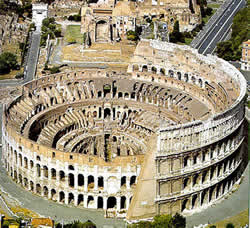 We come in contact with it every day in some shape or form. It has touched the lives of the human race since 5600 BC when ancient Serbians used it to construct huts. A thousand years ago, the pyramids of Shaanxi were constructed with a form of concrete. Assyrians, Babylonians, Egyptians and Romans all had their own forms of concrete.
We come in contact with it every day in some shape or form. It has touched the lives of the human race since 5600 BC when ancient Serbians used it to construct huts. A thousand years ago, the pyramids of Shaanxi were constructed with a form of concrete. Assyrians, Babylonians, Egyptians and Romans all had their own forms of concrete.
That is until, at one point in history, the recipe for concrete was lost to mankind for some 13 centuries. Did you know that it was only just rediscovered in 1756? That’s right. Up until then it was lost!
It is all around us and for what we take as nothing more than just another one of life’s everyday occurrences, it is pretty special. Concrete is used for bridges, buildings, dams, roads, furniture and yes, even our favorite, ponds.
Now that concrete is the center of your attention again, do you ever wonder how it works?
Bah! Maybe not, but that is ok. I will give you a brief description of the inner workings of concrete anyway and with any luck, and if you’re actually planning a pond project, you’ll be better armed to make those concrete decisions about your pond. Please excuse the pun.
Basically concrete is a mixture of cement, aggregate and sand. Cement is made from limestone and calcium sulfates which in essence becomes a binder for the whole mess. Sand is used as a filler and the aggregate is used for strength.
When water is added, it is used to start the curing process, which is also known as the hydration process. This curing of the cement in the mixture is required before the concrete acquires its final strength. During this time, the environment should be controlled to allow this hydration process to take place. This can best be accomplished by keeping the concrete moist for the duration of the hydration process. In doing so, the risk of cracking will be minimized.
Different chemical admixtures also play apart in how concrete works. Typical admixtures are,
- Accelerators
- Retarding agents
- Plasticizers
- Corrosion inhibitors
All of which will affect the outcome of the final product. A speedier curing process, a stronger concrete or a more flexible concrete are just some of the results these additives will produce.
Now it is best to attempt to pour all of the concrete for a single structure in a single pour. This is because once the concrete cures, it is unlikely that the bond between a new pour and an old pour will be even close in strength as a completely poured unit. On the other hand, if the need is there to put the concrete down in multiple pours, then a very good bonding agent should be used to assist in connecting them together. Keep in mind though, that even with the binding agents, these joints will still be weaker than a solid piece of concrete.


